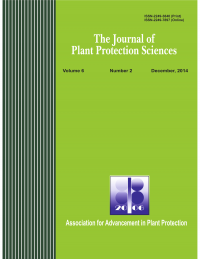An integration of weed management practices in potato un-der New Alluvial soil
Biswajit Pramanick, Sruti Karmakar, Koushik Brahmachari, Rupayan Deb
ABSTRACT
To study the effect of different weed control measures on the yield of potato, a field experiment was carried out with this crop (var. Kufri-Jyoti) for two consecutive years (2009-10; 2010-11) at ‘C’ Block farm of Bidhan Chandra Krishi Viswavidyalaya, Kalyani, Nadia, West Bengal. The experiment was laid out in RBD with nine treatments replicated thrice. The predominant weed flora in the experimental field of potato was Cyperus rotundas, Chenopodium album, Anagallis arvensis and Fumaria purviflora. The results revealed that the maximum tuber yield and return per rupee invested vis-à-vis the maximum N, P, K uptake by potato and the minimum uptake of N, P and K by weeds emerged in the potato field were recorded under the treatment T3 (hand weeding at 20 DAP along with mulching) which was closely followed by the treatment T9 (Pendimethalin @1kg a.i. ha-1 along with mulching). So, the findings of the experiment provide us with a great opportunity of using herbicides and mulching in combination to cope up with the labour crisis and minimize the cost of cultivation, therefore, maximizing benefit cost ratio.
To share on other social networks, click on any share button. What are these?






